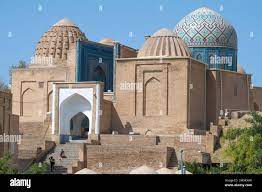The Timurid-Uzbek
The Timurid-Uzbek era refers to a period of Central Asian history that lasted from the late 15th to the early 16th century, during which the Timurid dynasty and the Uzbek confederation vied for control of the region. The Timurids were a Turkic-Mongol dynasty that had ruled over much of Central Asia and the Middle East since the late 14th century, while the Uzbeks were a confederation of Turkic tribes that had migrated into the region in the early 15th century.
The Timurid-Uzbek conflict began in the late 15th century, when the Timurid ruler Abu Sa'id died without leaving an heir. The Uzbek leader Muhammad Shaybani saw this as an opportunity to expand his territory and launched a campaign to seize Timurid lands in Transoxiana. The Timurid ruler Husayn Bayqara managed to resist the Uzbek advance and even launched a counter-attack, but he was ultimately defeated in battle and forced to flee to Herat.
The Uzbek victory marked the beginning of a new era in Central Asian history, as the Uzbeks began to establish a powerful empire in the region. Under Muhammad Shaybani and his successors, the Uzbek confederation extended its territory westward into Iran and eastward into the Tarim Basin, consolidating its power over much of Central Asia.Despite the Uzbek conquest, the Timurids continued to play an important cultural and intellectual role in the region. Many Timurid princes and scholars sought refuge in the courts of Safavid Iran and Mughal India, where they continued to patronize the arts and sciences.
The Timurid-Uzbek era was marked by significant cultural and artistic achievements. The Timurids and Uzbeks both patronized the arts, particularly in the areas of calligraphy, miniature painting, and architecture. This period saw the development of a distinct Central Asian style of art, which blended elements of Persian, Indian, and Turkic culture.
In conclusion, the Timurid-Uzbek era was a period of significant change and conflict in Central Asian history, marked by the rise of a powerful Uzbek empire and the decline of the Timurid dynasty. Despite the political instability, this period was also marked by significant cultural and artistic achievements that continue to influence the region today.

Comments
Post a Comment